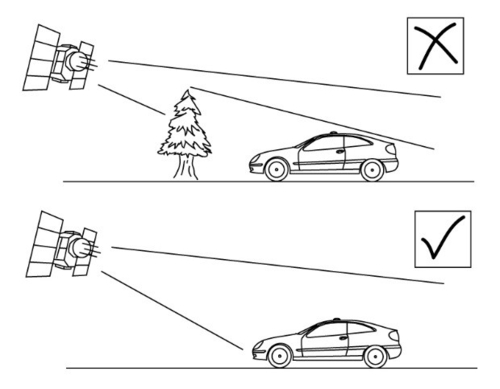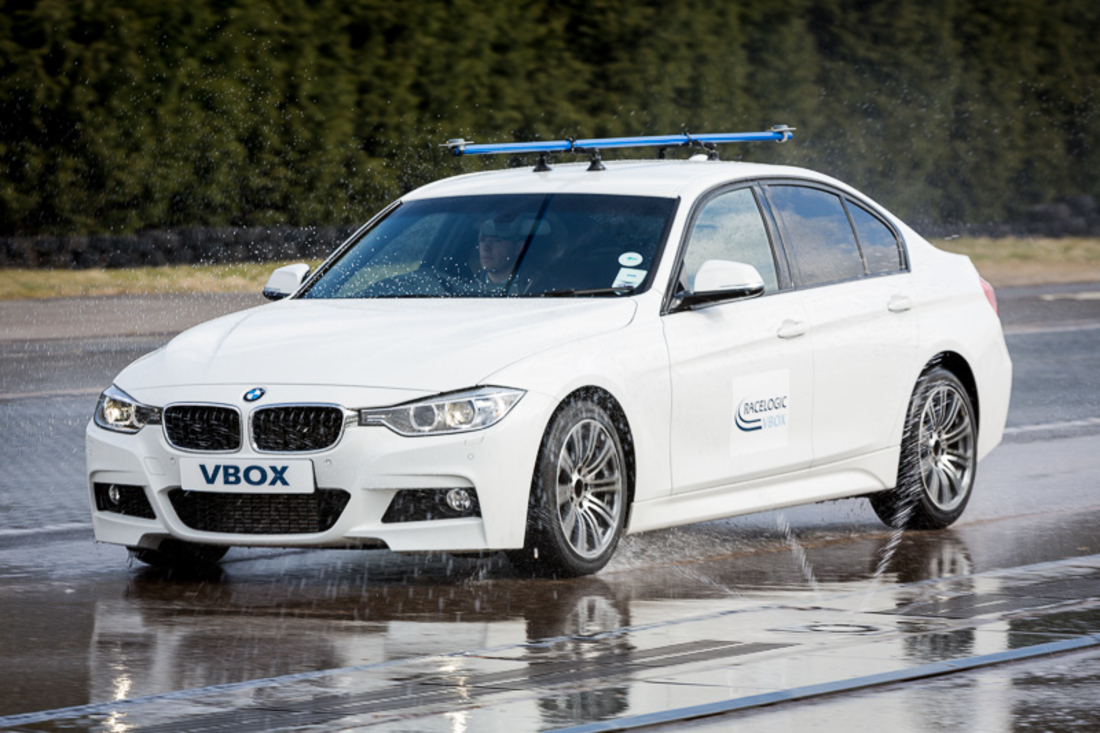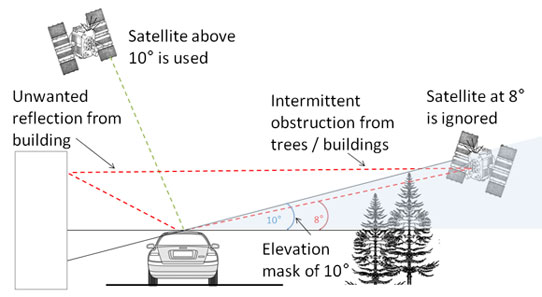02 - VBOX 3i GNSS Antenna Placement

Single Antenna Systems
The GNSS antenna supplied with the VBOX is a 5 V active antenna. For the best possible signal quality, it is important to maintain a clean connection between the antenna and the VBOX. Before fixing the antenna to the VBOX, ensure that there are no dust particles in either connector. Replacement antennas are available by contacting your VBOX distributor.
The antenna is a magnetic mounting type for quick and simple mounting to the vehicle roof. For optimum GNSS signal reception, make sure that the antenna is fitted to the highest point of the vehicle away from any obstructions that may block satellite reception. The GNSS antenna works best with a metal ground plane underneath (a metallic vehicle roof is perfect for this)
Please also note that when using any GNSS equipment, a clear sky view is important. Objects in the surrounding area such as tall buildings or trees can block the GNSS signal causing a reduction in the number of satellites being tracked, or introducing reflected signals that can decrease the accuracy of the system. Note that clouds and other atmospheric conditions do not affect the VBOX’s performance.

GNSS antennas require a ground plane to operate correctly. This helps to reduce unwanted reflections of the GNSS signal caused by nearby objects, and usually the metal roof of a vehicle performs this function. However, if a test requires an antenna to be placed either off the vehicle, or on a vehicle that does not have a metallic roof, a special ground plane antenna must be used. This has an internal ground plane and can operate perfectly without the need for mounting on a metal surface. Ground plane antennas are available from your VBOX distributor.
Dual Antenna Systems
For further info on slip/pitch and slip/roll setups, click here.
When testing using dual antenna mode, the greater the antenna separation, the greater the accuracy of the dual antenna derived data channels.
| Slip Angle Accuracy | Pitch/Roll Angle Accuracy |
|---|---|
| <0.2° rms at 0.5 m antenna separation <0.1° rms at 1.0 m antenna separation <0.067° rms at 1.5 m antenna separation <0.05° rms at 2.0 m antenna separation <0.04° rms at 2.5 m antenna separation |
<0.14° rms at 0.5 m antenna separation <0.07° rms at 1.0 m antenna separation <0.047° rms at 1.5 m antenna separation <0.035° rms at 2.0 m antenna separation <0.028° rms at 2.5 m antenna separation |
Some vehicle roofs limit the potential separation value. In this case a roof mount (RLACS171) can be utilised to increase separation.
Antennas should be positioned so that the gold antenna connector of primary and secondary antennas (A+B) are pointing in the same direction. This matching positioning ensures that the separation measurement is relative.

We recommend you measure separation from outer edge of antenna connector A, to same outer edge of antenna connector B. Note that accurate entry of antenna separation is essential for dual antenna operation.

- In pitch alignment, the primary antenna (ANT A) should be placed towards the rear of the vehicle, and the reference antenna (ANT B) placed at the front.
- When in roll alignment, the primary antenna (ANT A) should be placed to the left of the vehicle, and the reference antenna (ANT B) placed to the right.
When mounting the antennas directly to the vehicle roof, ensure that the antenna placement still follows the guidance of the single antenna above (i.e. clear ground-plane, away from obstruction).
Where possible, antennas should be placed on a level plane. The measured distance between the antennas should be the 2D distance between the antennas as viewed from above. It is not the straight-line distance between the antennas, regardless of the mounting angle.
|
Both antenna cables must be the same length! Timing is a very important aspect of the dual antenna lock and identical cable lengths will ensure that signal propagation delays do not cause unreliable dual lock. |
Satellite Elevation Mask
This feature can be used to improve GNSS signal quality when nearby obstacles like trees and building are reflecting or temporarily obscuring the signal from satellites at low elevation. Raising the mask will cause the GNSS engine to ignore satellites below the mask angle, so must be used carefully as it also reduces the total number of received satellites.
The elevation mask angle can be changed in VBOX Setup and by using VBOX Manager.

GNSS Coldstart
A GNSS coldstart may be required when:
- The GNSS engine has locked up.
- VBOX is struggling to acquire satellite lock.
A GNSS coldstart forces the GNSS engine to reset its downloaded almanac of current satellite positions. This can be useful if the VBOX 3i is having trouble locking onto satellites, which typically occurs if the VBOX 3i has not been used for several weeks or if it was last used a long distance (over one thousand miles) away from the current location.
After performing a GNSS coldstart leave the VBOX 3i powered up in a static location where the antenna has an unobstructed view of the sky until the ‘SATS’ LED becomes solid green.
Once the VBOX 3i has downloaded the new almanac it will reacquire satellites in noisy situations (such as near trees, buildings and under bridges) much quicker. It will also acquire satellite much quicker on power-up.
To perform a GNSS coldstart on the VBOX 3i perform the following actions:
- Press and hold the ‘LOG’ button on the front of the VBOX 3i for five seconds until a long beep is sounded.
- When the button is released the ‘SATS’ LED will start to flash red showing that the coldstart has been performed and the GNSS engine is now not locked onto any satellites.
- After approximately 30 – 45 seconds, the ‘SATS’ LED will start to flash green / orange indicating that satellite lock has been achieved and indicating the number of satellites that it is locked onto.
Important notes
When a GNSS coldstart is carried out, please note that this resets the DGPS and RTK mode to 'None'. Also, if using a dual antenna system, the VBOX 3iD/3iDR will reset dual antenna separation to default settings (1 m).
